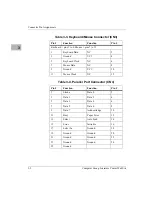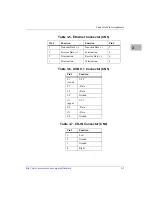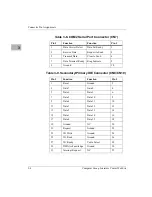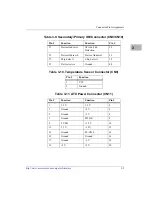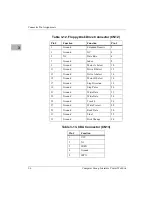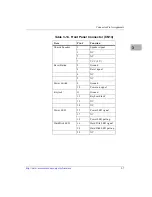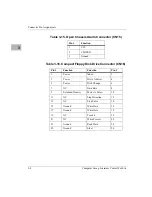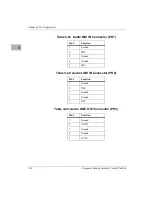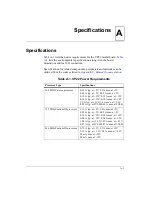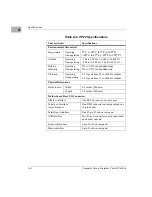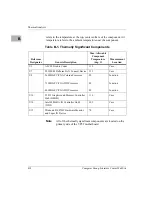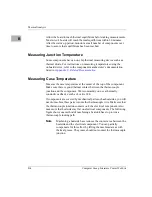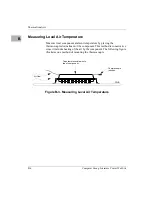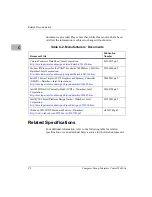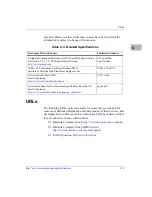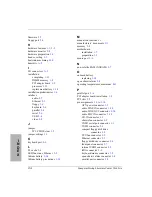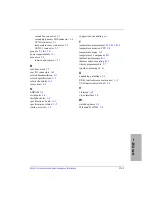
B-1
B
B
Thermal Analysis
Board component temperatures are affected by ambient temperature, air
flow, board electrical operation, and software operation. In order to
evaluate the thermal performance of a circuit board assembly, it is
necessary to test the board under actual operating conditions. These
operating conditions vary depending on system design.
While Motorola Computer Group (MCG) performs thermal analysis in a
representative system to verify operation within specified ranges (see
), you should evaluate the thermal performance
of the board in your application.
This appendix provides systems integrators with information which can be
used to conduct thermal evaluations of the board in their specific system
configuration. It identifies thermally significant components and lists the
corresponding maximum allowable component operating temperatures. It
also provides example procedures for component-level temperature
measurements.
Thermally Significant Components
The following table summarizes components that exhibit significant
temperature rises. These are the components that should be monitored in
order to assess thermal performance. The table also supplies the
component reference designator and the maximum allowable operating
temperature.
You can find components on the board by their reference designators as
shown in
and
. Versions of the board that are not fully
populated may not contain some of these components.
The preferred measurement location for a component may be junction,
case, or air as specified in the table. Junction temperature refers to the
temperature measured by an on-chip thermal device. Case temperature




